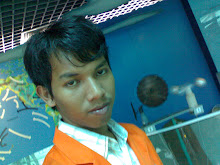What Is Drilling and Completions?
Drilling used to be strictly hit or miss. Operators hammered cable tools into the earth hoping to find oil or gas. But the development of more sophisticated tools has enabled drillers to probe to greater depths and with more success in less time. These tools have become critical as the search for oil and gas extends into deeper waters and more remote terrain.
Until the 1970s, rotary drilling was effective in plumbing the depths of vertical wells, but it couldn't reach horizontally. The development of horizontal drilling has extended the reach and increased production. More recently, directional and extended-reach drilling have allowed operators to access reservoirs far from the drilling location.
Completions technology also has evolved, securing wells in less time and with greater protection. Cased-hole completion involves making small holes in the well casing and formation so that the oil or gas can flow effectively from the rock into the production tubing. In open-hole completions, sand screens and gravel packs are inserted into the reservoir to stabilize the open hole and maintain the flow of oil from the reservoir into the well bore; they also control the migration of sand, which might otherwise cause washouts and other problems. Next, acids and fracturing fluids can be pumped into the well under high pressure to fracture, clean and stimulate the rock to produce oil or gas. Finally, production tubing is added to provide an efficient path to the surface.
What Chevron Is Doing
Chevron's long-term exploration strategy — blending disciplined, data-driven decision making with superior technical competency — is paying off. For each of the past seven years, we have added an average of 1 billion barrels of oil-equivalent per year to our resource base through our exploration program.
Angola – The Benguela Belize–Lobito Tomboco production platform stands 1,680 feet (500 m) high and is one of the tallest structures in the world. It is the first compliant tower installed outside the Gulf of Mexico. The platform's state-of-the-art rig can drill wells in excess of 30,000 feet (9,144 m).
Kazakhstan – Tengizchevroil's Sour Gas Injection/Second Generation Plant uses a unique combination of conventional and newly developed sour gas injection technology to process crude with a very high sour gas–to-oil ratio. This project may pave the way to applying the technology more broadly within the Tengiz reservoir, with the potential to increase recoverable reserves.
Nigeria – The Agbami deepwater project uses a floating production, storage and offloading vessel to produce oil in 4,800 feet (1,463 m) of water. The project's subsea wells, completed using intelligent well technology, are some of the most complex completions in the world.
Gulf of Mexico, United States – Our Tahiti project will produce oil from wells 4,100 feet (1,250 m) underwater that extend vertically more than 4 miles (6.5 km) below the sea floor. Producing oil profitably through the immense pressure at this depth is a complex project.
Investing in New Finds
As of 2008, Chevron was one of the world's most active offshore operators. Key exploration areas are the Gulf of Mexico, the deep waters off western Africa, the Gulf of Thailand and offshore northwest Australia.
Our technology and expertise enable us to drill successfully, especially in deep water. And technology allows us to reduce our drilling time, yielding significant savings.
Setting a New Standard for Drilling
Chevron has set a new standard for directional drilling with AutoTrak®, a steerable rotary system. The system is controlled remotely by an aboveground operator who steers it by computer. The operator sends commands that direct the drilling operation and receives real-time log data about the oil-bearing rocks. This enables the drilling tool to be steered in even the most complex drilling environments.
Case in point: When the Captain Field was discovered in 1977, it was estimated to contain more than 200 million barrels of heavy crude oil. But despite its rich reserves, this U.K. North Sea field was deemed uneconomical to develop.
Fast-forward 20 years to 1997. With advancements in technology that made drilling long-reach horizontal wells an option, the first of three development phases for the Captain Field was launched, with the initial production phase beginning that year.
Now in its third phase, the field's reservoirs have seen some notable "firsts" over the course of their development. Among these was a previously untested well design — a high dogleg directional well that turns and twists through a spaghetti junction of horizontal wells to reach its target: the previously inaccessible crude directly below the drilling platform.
In the summer of 2004, AutoTrak® was used to drill and complete the first semihelical well, which enabled it to steer precisely in and around 15 existing wells. It proved the viability of precisely steering a complex profile in a difficult drilling environment with very little margin for error.
AutoTrak® is just one example of the ways we are continuing to push our technology forward to safely find and produce oil and gas in remote, geologically complex areas.
Improving Operations
Even as we find and start to produce from new wells, we still work to find ways to improve production efficiency. In addition to preparing new oil and gas wells for production, drilling teams also help to revitalize existing wells. This process involves repairing or stimulating the well — such as replacing the tubing or deepening the well — to restore or enhance its production of oil or gas.
Langganan:
Posting Komentar (Atom)

Tidak ada komentar:
Posting Komentar